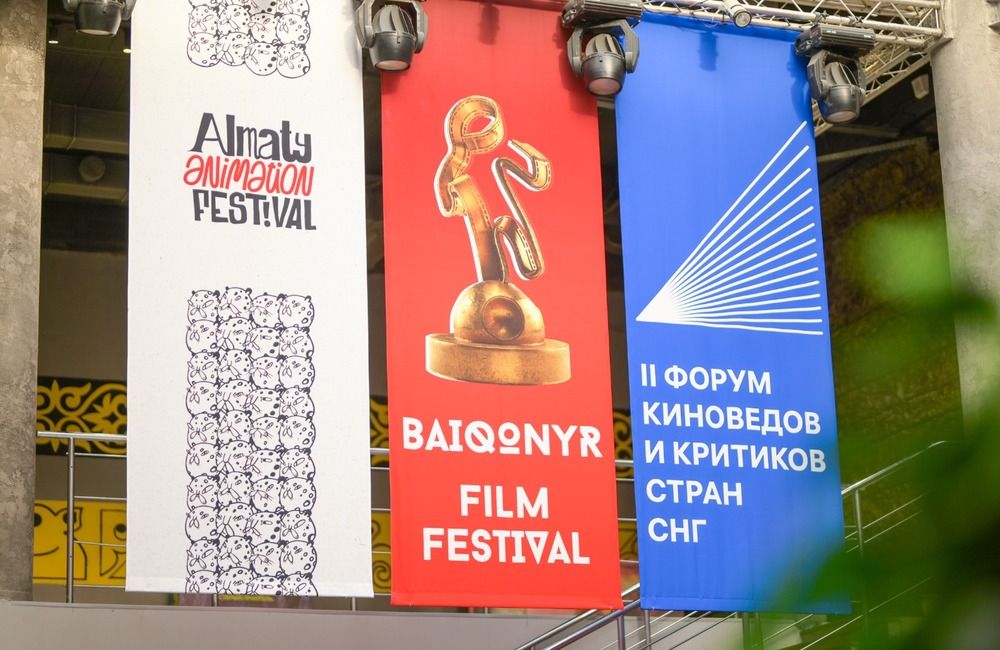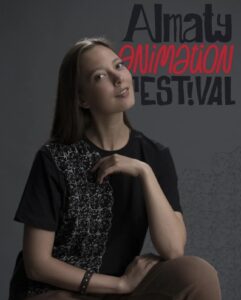ASTANA – Kazakhstan’s animation industry is developing but needs to incorporate a greater range of animation tailored for adult audiences, said Anita Chernykh, the founder of the first Almaty Animation Festival, in an interview with Kazinform news agency. The event was held on Sept. 6-10 in Almaty.

The first Almaty Animation Festival was held on Sept. 6-10. Photo credit: arminfo.info
About the festival
The Almaty Animation Festival was hosted as part of the 8th Baiqonyr Film Festival, an event designed to create an ecosystem where young filmmakers can get a strong start and where high-quality works are showcased.

Anita Chernykh, the founder of the festival. Photo credit: Instagram @cherryant_
“Every year, as part of the Baiqonyr Film Festival, we showed the best domestic cartoons to Kazakh viewers. Year after year, more and more good works were submitted, and the audience expanded. The animation category became so robust that we decided to make it a separate festival,” the organizers shared on the festival’s social network.
The Almaty Animation Festival offered both fans and professionals in the industry a chance to learn, network, and hear from industry leaders about the craft of animation. It featured screenings of commercial cartoons as well as a series of workshops, masterclasses, lectures, and seminars.
This year, the festival attracted more than 150 submissions from Kazakhstan and Central Asia, with 45 cartoons being selected for competition.
The festival comprised two competition programs: the main program and an international student program. Vasily Chirkov’s “A White-White Day” won the Best Animated Film category, while Maria Lukina’s “Is the Moon Lonely?” won the student competition.
Animation in Kazakhstan
There is a growing interest in all forms of animation, which was a focal point at this year’s Almaty Animation Festival.
According to Czernykh, the winner of the main prize at the Tashkent International Animation Forum in 2021, independent animation is actively developing in Kazakhstan.
“We have authors who participate in international festivals, such as Marzhan Zhubanysh and Ivan Ardashov,” said Chernykh.
“The field of student animation has expanded as well, both in terms of quantity and quality of the films produced. There are also studios with private funding, such as Tasqyn Studio,” she added.
However, independent animation is characterized by a high level of self-censorship.
“Our authors more often touch upon existential and philosophical themes, working within the framework of children’s cartoons,” Chernykh said. “In fact, this is how it is historically. Kazakhstan’s animation has its roots in the Soviet past. As you know, Soviet animation was focused exclusively on children’s audiences. And, speaking of independent animation that is made without additional financial support, we can say that in Kazakh animation today there are elements of self-censorship.”
According to Chernykh, both the commercial and state-supported sectors in Kazakhstan’s animation industry are primarily geared towards children. Adult viewers are largely left to rely on short films by individual authors and festival projects. This stands in contrast to the global animation industry, where content for teenagers and adults comprises about 30% of the market.
“The majority of Kazakh cartoons for adult audiences have no violent or explicit scenes. Compared to foreign animation, there are fewer animators in Kazakhstan. Abroad, however, various large companies and funds often provide financial support for student projects, without any interference,” said Chernykh.
Chernykh also observed a rise in the originality of the works submitted to this year’s festival. She believes that participating in such competitions offers animators an invaluable platform to showcase their work to both audiences and expert juries.
Progress towards original style
As an animator who has created several award-winning narratives, Chernykh stressed the importance of artists finding their individual voice and style while creating stories.
According to her, the reputation of the author’s unique style of animation is growing in the world today. Large commercial projects allow authors to move away from the classic concepts and three-act narrative structure to create more complex animation with other themes.
“This is evident in Pixar’s projects, such as the animated films ‘Spider-Man: Across Universes,’ ‘Puss in Boots: The Last Wish’ and others. If earlier studios had more influence on production and dictated their terms, today the priority is given to an author’s vision. Authors are looking for new themes and ways to tell the story, moving away from the classic Disney picture, where everything is beautiful and clear,” said Chernykh.
“I hope that as viewers we will also be ready for experimentation on our screens. In return, we will be waiting for an excellent product and a free market, where authors can bring fresh perspectives to the language of narration and to the perception of the cartoon as a whole,” she concluded.


